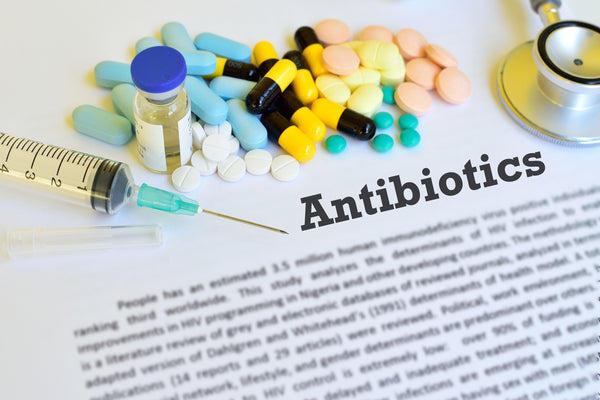Prebiotics & Probiotics? What’s the difference?
The internationally accepted definition of probiotics is “live microorganisms that, when administered in adequate amounts, confer a health benefit on the host”. Probiotics can be found in fermented foods (such as yogurt and kefir), in probiotic supplements and they are listed as ingredients in some manufactured dog foods. One must be careful when purchasing probiotics though, as studies have shown that many pet foods or supplements do not contain what is stated on the labels. One also needs to be aware that the numbers of live organisms in probiotic-containing products tend decline with time and that this is often accelerated if they are not refrigerated.
Prebiotics are essentially food for probiotics, including the healthy bacteria already living in the gut. They are compounds in the diet that your dog doesn’t digest, but instead, are broken down by microorganisms in the gut. As the healthy bacteria break down the prebiotic, they release short chain fatty acids (SCFAs), which have beneficial effects directly in the colon as well as in other areas of the body. By providing a substrate for the healthy bacteria to feed on, their numbers increase, the environment inside the gut changes and it becomes less hospitable for potentially harmful bacteria. Unlike probiotics, prebiotics are not living organisms and are remarkably stable. For example, the prebiotic resistant starch found in MSPeubiotic® has a very stable shelf life and only very high temperatures (>60℃ or 140℉) will inactivate it.
Prebiotics and probiotics can each provide benefits on their own, but they can also be used together. When combined, they are known as synbiotics, since they can synergize to increase the effectiveness of each other. Probiotics can attach to the starch granules and this can help to protect and transport them into the colon. Once there, the prebiotics will feed the beneficial gut bacteria and encourage their growth.
So now that we know the difference between prebiotics and probiotics, how does this relate to our dogs? A puppy starts life in the womb with a sterile gut, but will ingest organisms as it passes through the birth canal and then from the environment. These bacteria will grow and inhabit the gut – they are basically the first probiotics! In addition to other well-known nutrients, the milk the pup receives from it’s mother contains prebiotics, and these substances feed and encourage the growth of beneficial bacteria in the gut. Prebiotics and probiotics begin to shape the digestive health of the pup within the first few moments of life!
Ensuring that your dog’s diet contains sufficient prebiotics, from the introduction of solid food in puppyhood to the diet you feed in the senior years, will ensure that they maintain a healthy population of organisms in their gut –an important factor in maintaining their health.




Dr. Susan Hore, DVM
Author